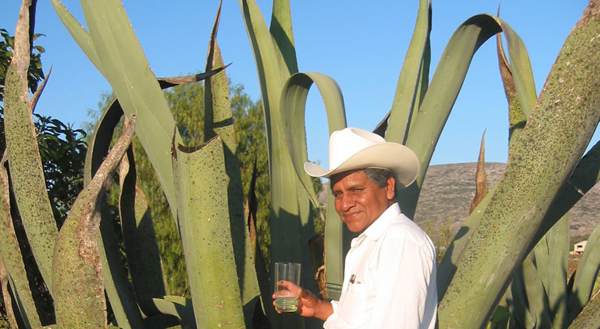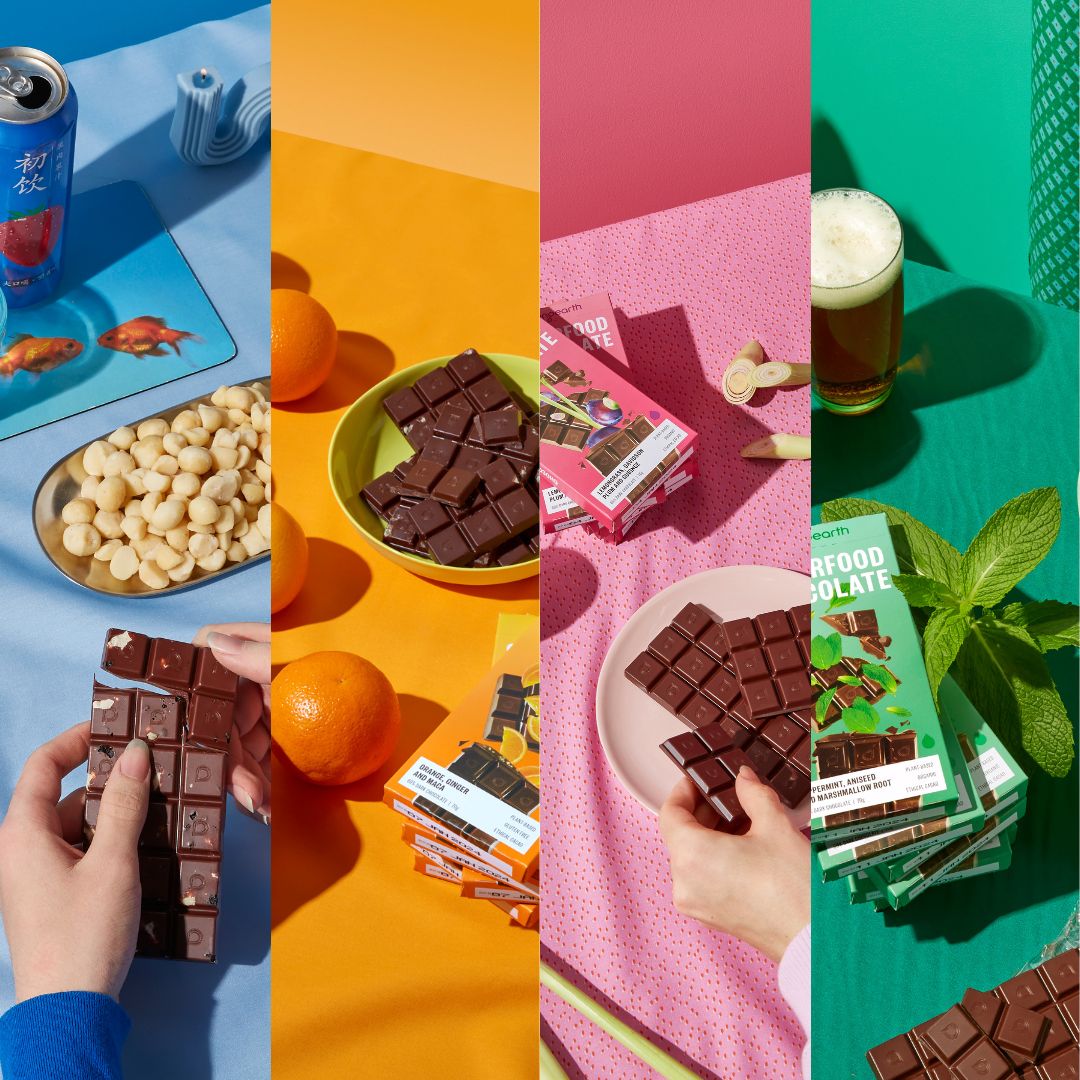
There’s been a lot of attention in the media lately on the topic of obesity and health with over a million Australians currently affected by diabetes. A fantastic article by Paul Zimmet and Philip James published in 2006 in The Medical Journal of Australia outlines some solutions which could be undertaken on a policy level, though the unfortunate fact is that the situation has continued to worsen over the past five years. It’s all well and good to lobby politicians and discuss solutions, but what we at Loving Earth are interested in is what can we do about ourselves? This is a complex subject that we’re attempting to get to the essence of, particularly in relation to Agave Syrup, which has been the subject of a lot of controversy & misinformation recently. Our Agave Syrup is a minimally processed natural Certified Organic sweetener. It’s a concentrated food (essentially a concentrated cactus juice) and just like any concentrated fruit juice (or honey for that matter), it should therefore be consumed in moderation. Its sugars are in the same form as honey and fruits and are processed by the body in a similar way. It is low GI and diabetic friendly but it should be avoided by people with a fructose intolerance. Please see the following article for a more in depth analysis of agave and whether you should consume it.
There are many types of sugar, but the three main ones are sucrose, glucose and fructose. A good rule of thumb in relation to sugars is that the less it’s processed, the higher the mineral content is, which makes it easy for your body to absorb it. The more it’s processed, the harder it is for your body to take it on, meaning that it just goes straight into your bloodstream without giving you any nutritional benefit. Let’s take a closer look at some examples.
A typical commercial sweetener is high-fructose corn syrup. It’s found in a huge range of products in many countries because it’s cheap, but unfortunately it goes through a huge range of processes to reach the form in which it enters foods. These processes strip it of its nutrients and minerals. High-fructose corn syrup is a very short-chained fructose and is stored in the plant as a starch. Yes, it provides quick energy, but it’s basically empty calories with no nutritional value. Agave Syrup, for example, has a good mineral content, is minimally processed and comes from long-chained fructans, called inulin (that’s inulin, not insulin – a common mistake!). This is why it’s diabetic friendly. Yacon Syrup then is also comprised of inulin-based sugars, and is particularly healthy due to its long-chained sugars in the form of Fructooligosaccharide (or FOS). FOS don’t go into the bloodstream, and it is in fact a really powerful prebiotic which greatly aids digestion…later on in this article we’ll explain just how it works.
Going back to the issue of the worldwide diabetes epidemic, an interesting insight into how it came about can be seen in the story of the Pima Indians. Living in the area nowadays known as Arizona, their traditional way of life was devastated with the birth of the modern United States. Prior to that the Pima consumed Mesquite as a staple food, milling the pods into a flour to make breads. Sweet and caramel-like, it was consumed in great quantities and the Pima benefitted greatly from its healthy properties. High in protein and containing significant quantities of calcium, magnesium, potassium, iron and zinc, it’s also rich in the amino acid lysine. When the Pima were taken off their land and forced onto reservations in the mid-to-late 19th century, their diet changed dramatically, taking on higher and higher quantities of processed foods. That community now has the highest incidence of diabetes on the planet: 95% of their people suffer from the disease. Why is this? Well, mesquite has an incredibly low GI and a high mineral content, and the reason why the GI is so low is partly because of that very high mineral content. So although the Pima were used to a very sweet diet, it was nonetheless extremely healthy for them. When they went off this traditional diet, they retained a preference for sweet foods, yet their bodies simply couldn’t cope with white sugar and flour, which have a high GI content and are devoid of minerals…the high GI value being partly because these foods are devoid of minerals. Hence, widespread diabetes.
This is a good point at which to give a brief description of what GI refers to and why it’s important. GI means Glycemic Index, which is a way of measuring the short-term effect of foods on blood sugar. Carbohydrates that break down quickly during digestion and release glucose rapidly into the bloodstream have a high GI; carbohydrates that break down more slowly, releasing glucose more gradually into the bloodstream, have a low GI.
- High GI = 70+: glucose.
- Mid GI = 56-69: sucrose, cane sugar, white sugar, brown sugar, honey.
- Low GI = <55: fructose, maple syrup, agave syrup, coconut sugar.
Broadly speaking, low GI foods will give you a long, sustained supply of energy while high GI foods will give you a short, intense burst of energy. All of Loving Earth’s sweeteners are low GI and diabetic friendly: Coconut Sugar has a GI rating of 35, Agave Syrup of <30, Mesquite of 25 and Yacon Syrup an unbelievably low rating of 1.
Yacon
Yacon is a root cultivated in mid-altitude Andean Valleys, providing a sustainable source of income for people there. It’s actually a health food –something you would take daily in small quantities as a supplement. It has these qualities because it’s comprised of long-chain complex sugars known as Fructooligosaccharides (FOS), which are not absorbed and digested in the same way as short-chain simple sugars. FOS acts as a pre-biotic in humans, which means that it travels to the intestinal tract and provides food material for the pro-biotic bacteria there which work as part of our healthy digestive system. We all need probiotics to digest and assimilate food and thus gain nutrition. Prebiotics such as Yacon Syrup provide a good environment for probiotics to grow. Think of it like soil in a field: you can plant a seed in any field, but for it to grow and flourish, the soil must be of good quality. Yacon is an example of the quality “soil” which probiotics require. Many people take anti-biotics for medicinal purposes, meaning that our probiotics are constantly getting run down. If you have good sources of prebiotic material in your diet, then you’re going to create a really healthy environment for the probiotic bacteria to thrive. This is why Yacon Syrup is probably the healthiest sweetener out there.
 {image - our Agave grower Miguel in Ixmiquilpan}
{image - our Agave grower Miguel in Ixmiquilpan}
Agave
Our Agave Syrup comes from Mexico, where it is known as “El Árbol de Las Maravillas”, the tree of miracles, due to its many uses. Like Yacon Syrup, it’s sugars come from inulin. Our agave comes from the Wild Maguey cactus species rather than the Blue Weber variety, which is generally cultivated by large tequila companies, since it’s only used for tequila. Agave syrup made from the Blue Weber variety is usually cooked, whereas the processing of the wild maguey variety that we use is different…it’s raw. Agave Syrup doesn’t have the same long-chain form as Yacon, leading to its higher GI value. You can actually notice this when you consume it: the flavour is sweeter and more concentrated, with a simpler sugar structure which is not unlike maple syrup or honey. In fact, our Agave Syrup is processed in much the same way that honey is…bees use an enzymatic process to turn pollen into honey, while we use a plant-based vegan certified organic enzyme to do the same thing. What you have to do with any type of fruit-based sweetener is concentrate the sugar so that it doesn’t ferment. We use a low temperature vacuum evaporator to do this. With its low GI of about 30, we’ve had feedback from some diabetics that our agave is the only sweetener they can consume…but we’ve also had feedback from people that agave doesn’t agree with them. Again, this provides a further example of what we discussed last week: our bodies are all different.
Coconut Sugar
Coconut Sugar is the latest one we’ve come to use, for a number of reasons. It’s sucrose-based and has a low GI rating of 35, as compared to most commercial honeys’ GI rating of 55 and cane sugars’ GI of 68. Coconut Sugar is particularly noteworthy to us not just because of its gorgeous toffee-toned flavour, but because it’s considered the most sustainable sweetener in the world. Coconut palms produce an average of 50-75% more sugar per acre than sugar cane and use less than 1/5th of the nutrients for that production, plus they’re ecologically beneficial since they grow in diverse, wildlife supportive agro-ecosystems, restore damaged soils and require very little water. Over time they actually improve soil structure, fertility and water conservation, thereby allowing marginalised land to become lush jungle. This has led many traditional communities throughout the world to consider coconut palms as the “Tree of Life”, as one tree can provide a multitude of usable goods, such as roofing material, food, coconut water, building material and shade for crops. Coconut Sugar (also known as Evaporated Coconut Nectar, Coconut Palm Sugar or simply just Palm Sugar) is also a good sweetener for fructose intolerant people; it's not 100% fructose-free, but at roughly 5% fructose and 89% sucrose, it's much better than most other available alternatives.
 {image - one of our Coconut Sugar growers in Java, Indonesia}
{image - one of our Coconut Sugar growers in Java, Indonesia}
To finish then, people often ask us why we use Coconut Sugar or Agave Syrup in producing our chocolates. Apart from the support which these sweeteners provide to our health, to our environment and to small scale indigenous producers, we use them for two other very important reasons: they’re particularly suitable for processing the foods we make, and they’ve got a fantastic flavour. Dark Agave, which is what we use in all our manufacturing, has beautiful vanilla and cactus notes, while Coconut Sugar has this bright, zingy caramel toffee flavour. A further reason behind these two ranges is that different people respond to different sweeteners in different ways. Our basic approach to sweeteners is that no matter what type you use, they’re all concentrated: honey, coconut nectar, maple syrup, fruit juice, agave – all of them. Like we said at the start of this article, they must be used in moderation. There’s lots more information on our website, so do take a look if you want to research this further. We recommend that people experiment with different healthy sweeteners and tune in to what their own bodies are telling them. If consumed in such a way, they can provide a great enhancement to one’s diet in terms of flavour and enjoyment…because aside from being healthy, sustainable and fair, the things we eat have to actually give us pleasure!


